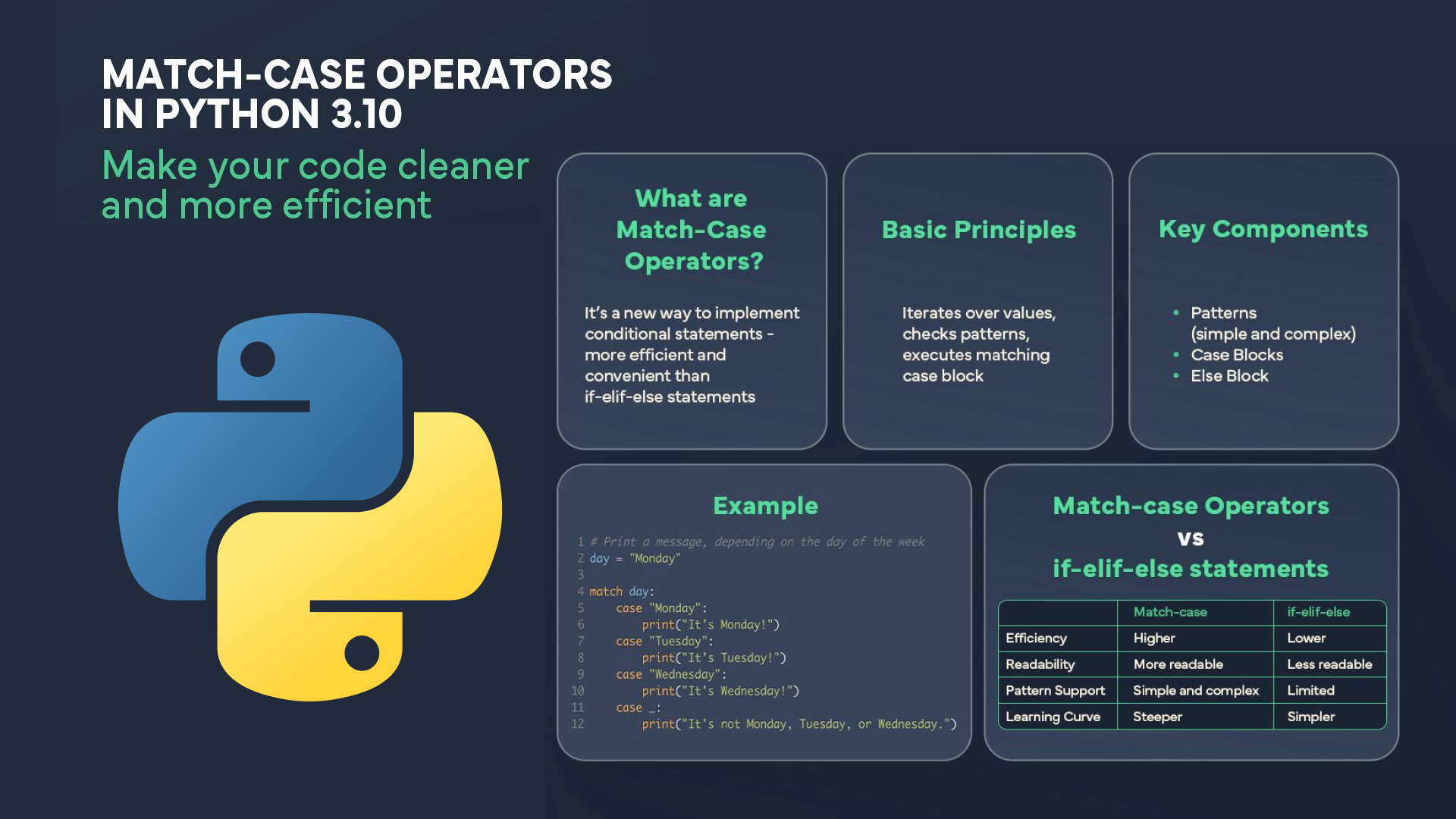Cursos relacionados
Ver Todos los CursosBest Python IDEs
Choosing the Right Environment for Your Python Development

Python, being one of the most popular programming languages, has a plethora of Integrated Development Environments (IDEs) to choose from. Whether you are a beginner or an experienced developer, selecting the right IDE can significantly enhance your productivity and coding experience. This article will explore some of the best Python IDEs available, highlighting their features, pros, and cons to help you make an informed decision.
What is an IDE?
An Integrated Development Environment (IDE) is a software application that provides comprehensive facilities to computer programmers for software development. An IDE typically includes a source code editor, build automation tools, and a debugger. Additionally, IDEs often come with features like version control, project management, and code navigation, making them essential tools for efficient coding.
Criteria for Choosing an IDE
When selecting an IDE, several factors should be considered to ensure it meets your needs. Ease of use is paramount, especially for beginners who need an intuitive interface. The IDE should have robust features such as code completion, debugging tools, and integration with other development tools. Performance is another critical aspect; the IDE should run smoothly without consuming excessive system resources. Additionally, a strong community and good support can provide valuable resources and troubleshooting assistance. Finally, the ability to customize the environment to fit your specific workflow can enhance productivity.
PyCharm
PyCharm, developed by JetBrains, is one of the most popular Python IDEs. It offers a comprehensive set of tools for professional developers, including intelligent code completion, on-the-fly error checking, and powerful debugging. PyCharm supports web frameworks like Django and Flask, making it ideal for web development. However, its extensive features can be overwhelming for beginners, and the full-featured version requires a subscription.
Run Code from Your Browser - No Installation Required

Visual Studio Code
Visual Studio Code (VS Code) is a free, open-source code editor developed by Microsoft. It has quickly become a favorite among developers due to its versatility and extensive plugin ecosystem. VS Code supports Python through extensions that provide features like linting, debugging, and code completion. Its lightweight nature ensures fast performance, and it can be customized to suit various development needs. However, setting up VS Code with all the necessary extensions can be time-consuming for new users.
Jupyter Notebook
Jupyter Notebook is an open-source web application that allows you to create and share documents containing live code, equations, visualizations, and narrative text. It is widely used in data science and academic research for its ability to combine code execution with rich text annotations. Jupyter supports multiple programming languages, including Python. While it excels in data analysis and visualization, it is less suited for developing large-scale applications.
Spyder
Spyder is an open-source IDE designed for data science and scientific computing. It integrates seamlessly with scientific libraries like NumPy, SciPy, and Matplotlib. Spyder's features include a powerful editor, interactive testing, debugging, and variable exploration. It provides a MATLAB-like interface, making it familiar to scientists and engineers. However, its focus on scientific computing means it may lack some features needed for general-purpose programming.
Thonny
Thonny is an IDE aimed at beginners and educators. It offers a simple, clean interface with features like syntax highlighting, code completion, and a built-in debugger. Thonny's user-friendly design makes it an excellent choice for those new to programming. It includes features like variable tracking and a step-through debugger, which are particularly helpful for learning. However, advanced users might find Thonny lacking in some advanced features.
Start Learning Coding today and boost your Career Potential

IDLE
IDLE is Python’s built-in IDE, and it comes bundled with the Python installation. It is lightweight and easy to use, making it a good choice for beginners. IDLE features include a Python shell, a basic code editor, and a debugger. While it is sufficient for simple projects and learning Python, it lacks many advanced features found in other IDEs, making it less suitable for large or complex projects.
Conclusion
Choosing the right IDE can make a significant difference in your Python programming journey. Whether you prioritize a feature-rich environment like PyCharm, a versatile and extensible editor like Visual Studio Code, or a beginner-friendly interface like Thonny, there is an IDE to meet your needs. Consider your specific requirements, such as the type of projects you work on, your experience level, and the tools you need, to make the best choice.
FAQs
Q: Do I need prior programming experience to use these IDEs?
A: While some IDEs like PyCharm and Visual Studio Code are more advanced and may require some prior experience, others like Thonny and IDLE are designed to be beginner-friendly.
Q: Are these IDEs free to use?
A: Many of the mentioned IDEs are free, such as Visual Studio Code, Jupyter Notebook, Spyder, Thonny, and IDLE. PyCharm has a free community edition, but its professional version requires a subscription.
Q: Can I use these IDEs for other programming languages?
A: Yes, many of these IDEs, especially Visual Studio Code and Jupyter Notebook, support multiple programming languages through extensions or built-in features.
Q: Which IDE is best for data science?
A: Jupyter Notebook and Spyder are particularly well-suited for data science due to their strong support for data analysis and scientific computing libraries.
Q: How do I choose the best IDE for my needs?
A: Consider factors such as your programming experience, the type of projects you work on, required features, and your preferred workflow. Experimenting with a few different IDEs can also help you find the best fit.
Cursos relacionados
Ver Todos los CursosThe SOLID Principles in Software Development
The SOLID Principles Overview
by Anastasiia Tsurkan
Backend Developer
Nov, 2023・8 min read

Match-case Operators in Python
Match-case Operators vs if-elif-else statements
by Oleh Lohvyn
Backend Developer
Dec, 2023・6 min read

30 Python Project Ideas for Beginners
Python Project Ideas
by Anastasiia Tsurkan
Backend Developer
Sep, 2024・14 min read

Contenido de este artículo